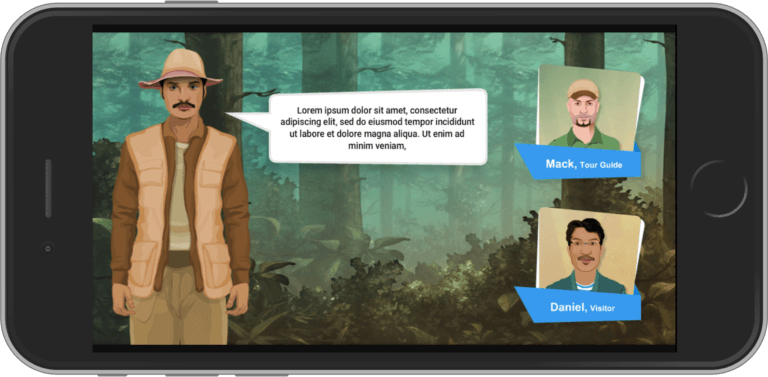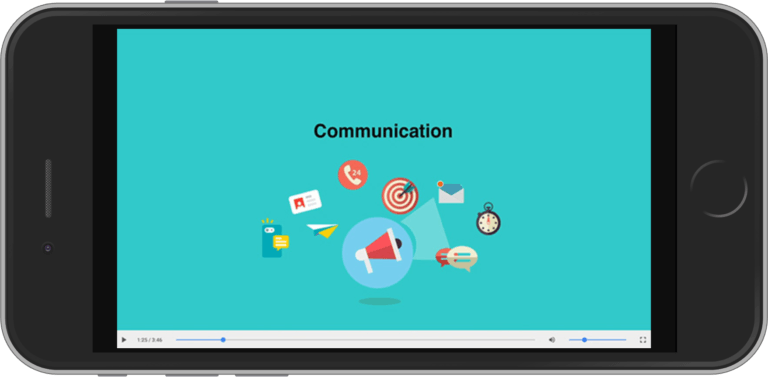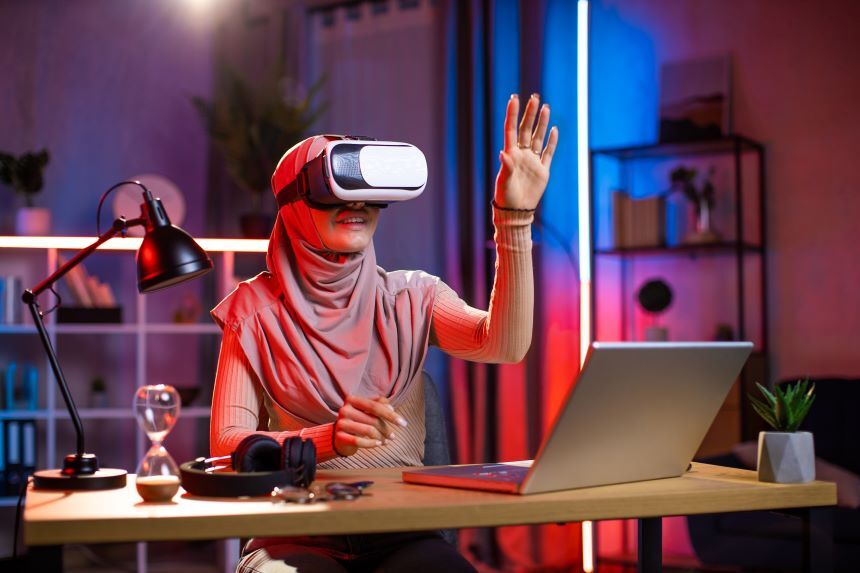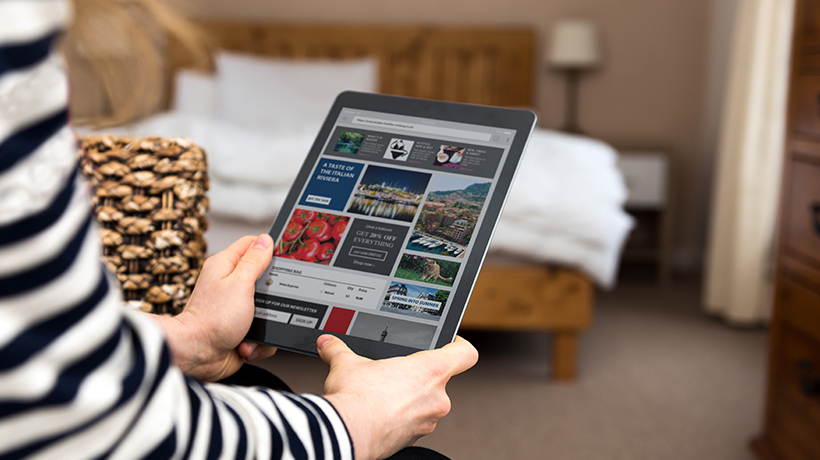
Video-based learning is an important component of online training delivery today. In this article, I showcase 8 examples of video-based learning that will help you create high-impact mLearning solutions.
How These Examples Of Video-Based Learning Help You Deliver High-Impact mLearning
Today, mLearning is the preferred mode of learning, and its phenomenal success is primarily on account of:
- Its ability to provide training anytime, anywhere
- Flexibility to consume the training on the device of the learner’s choice
mLearning can address most of the corporate training needs ranging from:
- Induction and onboarding
- Soft-skills training
- Product training
- Sales training
- Professional-skills training
Increasingly, mLearning is also being used for:
- Application simulations training
- Compliance training
If you were to look at the 70-20-10 model of training evaluation, mLearning fits into all modes.
- It can be used to offer formal training and instant job aids (or Performance Support intervention).
- It can be used to offer highly personalized training.
- It can be used to support informal learning (for instance, curated content as Read More).
- It can be used to promote social or collaborative learning.
In terms of the learning strategies that are being used to craft mLearning solutions, you can select from a wide spectrum of options like:
- Microlearning
- Video-based learning
- Gamification
- Scenario-based learning
- Story-based learning
- Branching simulations
Furthermore, you can look at the Next Gen, immersive approaches like:
- Interactive video-based learning
- Virtual Reality (VR)
- Augmented Reality (AR)
Why Video-Based Learning Should Be A Significant Part Of Your mLearning Strategy?
Videos offer high-impact training, and they have been used to complement or supplement online training as well as face-to-face Instructor-Led Training. Furthermore,
- We see a rapid increase in their adoption on account of the wider usage of mLearning or mobile learning.
- Another factor that is fueling the higher adoption of video-based learning is microlearning-based training.
The key benefits of video-based learning are as follows:
- A universal appeal that resonates with today’s multi-generational workforce
- High engagement and higher completion rates
- High recall, retention, and hence you get a more sticky learning experience
- Can be used to complement or supplement most of the corporate training needs
- Can be used as a stand-alone learning nugget (job aid) or as a series of microlearning nuggets connected through a narrative or a learning path (for formal training)
- Can be used to support ILT/VILT
- Can be used to promote informal and social or collaborative learning
Why Does The Combination Of Video-Based Learning And mLearning Make Sense?
To maximize the impact of your online training, you can use the combination of video-based learning and mLearning. Training can be delivered as microlearning nuggets and consumed on smartphones and tablets in an mLearning format.
This combination of mLearning and video-based learning will help you:
- Create learning that is engaging and immersive
- Create a sticky learning experience
- Support your traditional eLearning or face-to-face Instructor-Led Training
How Can You Use Video-Based Learning To Create High-Impact mLearning Trainings?
To maximize the impact of video-based learning, you need to work with a bigger picture or a Learning and Performance Ecosystem. With this approach, you can choose solutions that align with various learner needs and factor for creating awareness and pre-training interest generation.
Using the Learning and Performance Ecosystem that we use at EI, here is an overview of how you can craft your mLearning solutions as you leverage the video-based learning strategy.
Option 1: Video-Based Learning: To Support Initiation/Create Awareness Of Key Programs
- Teaser videos
- Videos to create awareness
- Videos to support key change management initiatives
Option 2: Video-Based Learning: To Watch And Learn
- Videos for learning specific concepts or skills
- Videos that demonstrate processes
Option 3: Video-Based Learning: To Practice And Apply
- Videos to practice acquired skills
Option 4: Video-Based Learning: To Reinforce And As Instant Job Aids
- Videos to reinforce—to offset the “Forgetting Curve”
- Videos for Performance Support intervention (instant learning aids/job aids)
Examples Of Video-Based Learning That Can Uplift mLearning Solutions
I have selected 8 examples of our video-based learning solutions that you can use to uplift your mLearning training.
Video-Based Learning Example 1: To Support Initiation/Create Awareness Of Key Programs
Teaser videos
This teaser video was created for a Robotic Process Automation company to:
- Launch a course for their new product
- Engage the audience in a better way
Video-Based Learning Example 2: To Support Initiation/Create Awareness Of Key Programs
Videos to create awareness
This video was used to:
- Build awareness about the growing wildlife tourism scene.
- Help learners in their profession by becoming certified tour guides.
Video-Based Learning Example 3: To Support Initiation/Create Awareness Of Key Programs
Videos to create awareness on quality
This video was created for an apparel and footwear industry:
- It portrays the importance of delivering quality products.
- The immersive kinetic text animation techniques engage the learners while enabling them to get familiar with key value drivers of quality.
Video-Based Learning Example 4: To Watch And Learn
Videos for learning specific concepts or skills
This video-based learning strategy was used to:
- Take the learners through the concept of bribery and the policies involved to eradicate bribery.
- Guide the learners through an intuitive and engaging journey with the help of appealing background visuals and icon animations.
Video-Based Learning Example 5: To Watch And Learn
Videos to summarize a process
This video-based learning strategy was used to:
- Provide an overview of the whole process of converting ILT materials to online learning.
- The engaging kinetic text animations offer higher retention, leading to a sticky learning experience.
Video-Based Learning Example 6: To Practice And Apply
Videos to practice the acquired skills
This video was made for tour guides:
- To understand and handle questions of visitors who came to the theme/entertainment park.
- To practice and apply their learning in real-life situational animations using characters and stories, good and bad examples, etc.,
Video-Based Learning Example 7: To Reinforce And As Instant Job Aids
Videos to reinforce messaging and offset the “Forgetting Curve”
This video-based learning strategy was created to:
- Reinforce the message delivered.
- Highlight guidelines and best practices.
- Used quick, crisp, and to-the-point typography based animations.
Video-Based Learning Example 8: To Reinforce And As Instant Job Aids
Videos for Performance Support intervention (instant learning aids/job aids)
This video-based learning strategy was an additional learning asset for a mobile-first course:
- Provided as a Performance Support Tool to aid in retention and on-the-job references.
- Used infographics and animated text, icons, and graphics.
As you would have noted, video-based learning can be used to uplift the impact of your mLearning solutions. As the featured examples illustrate, you can use video-based learning across various learner needs. This is not all, they can be used to create awareness and interest before the roll-out of your key initiatives.
If you have any queries or need any specific support, do contact me at apandey@eidesign.net.
Read More:











